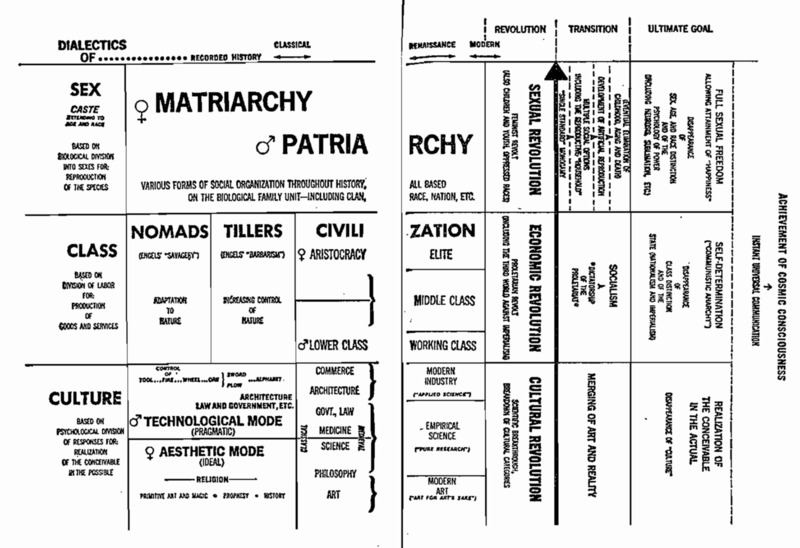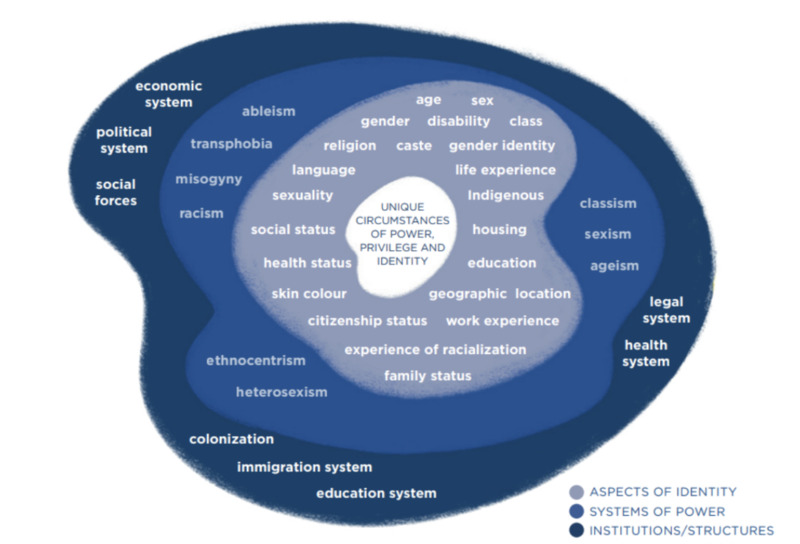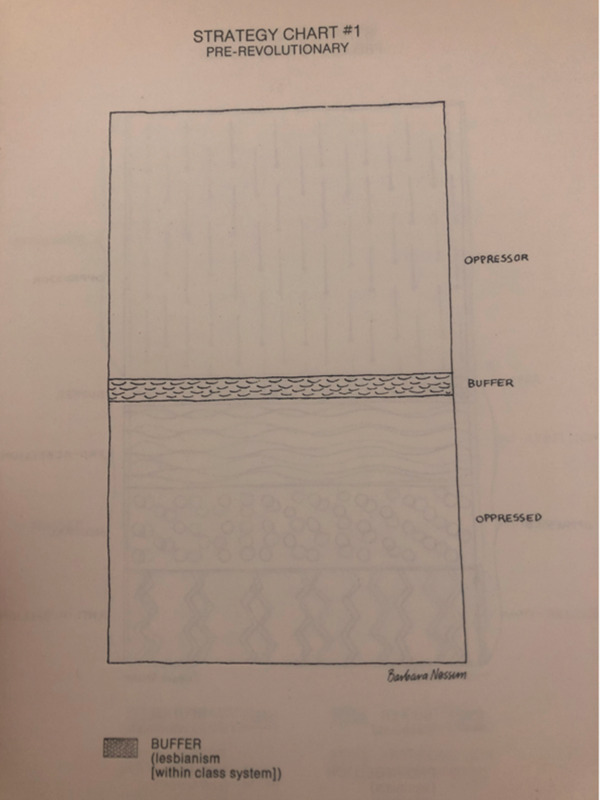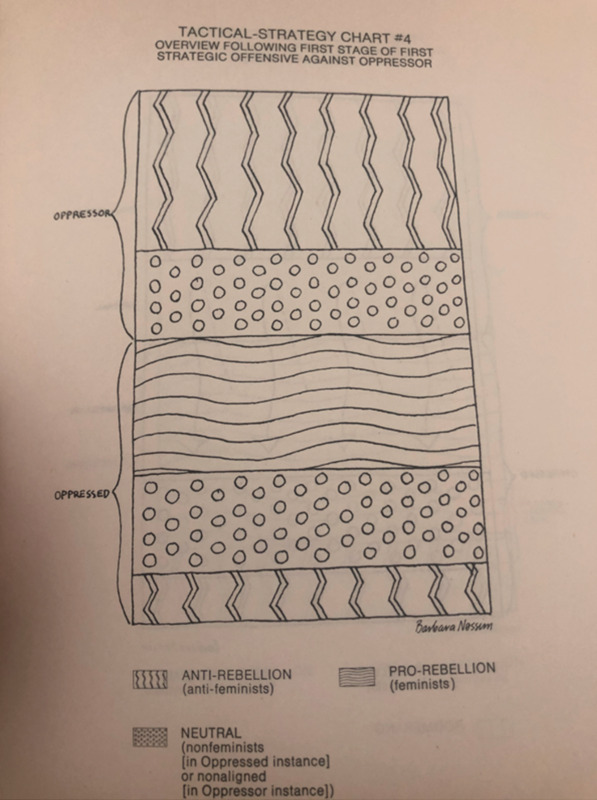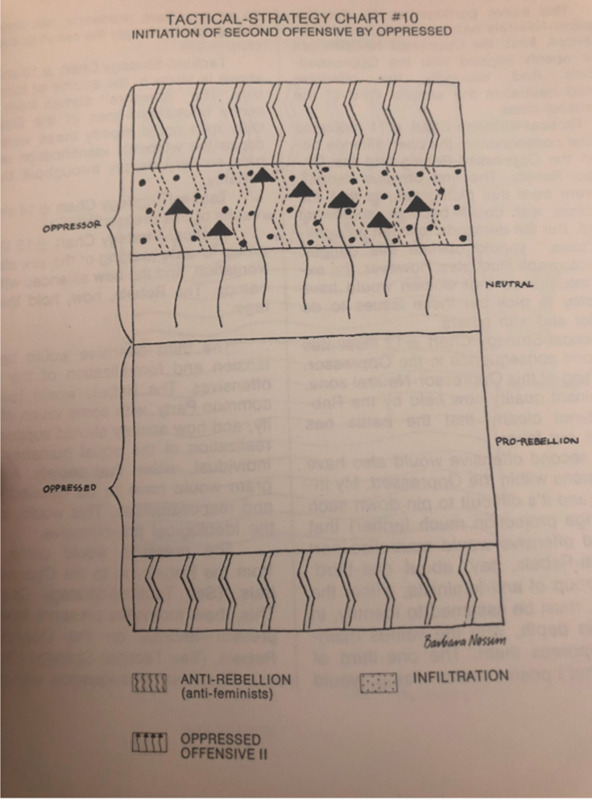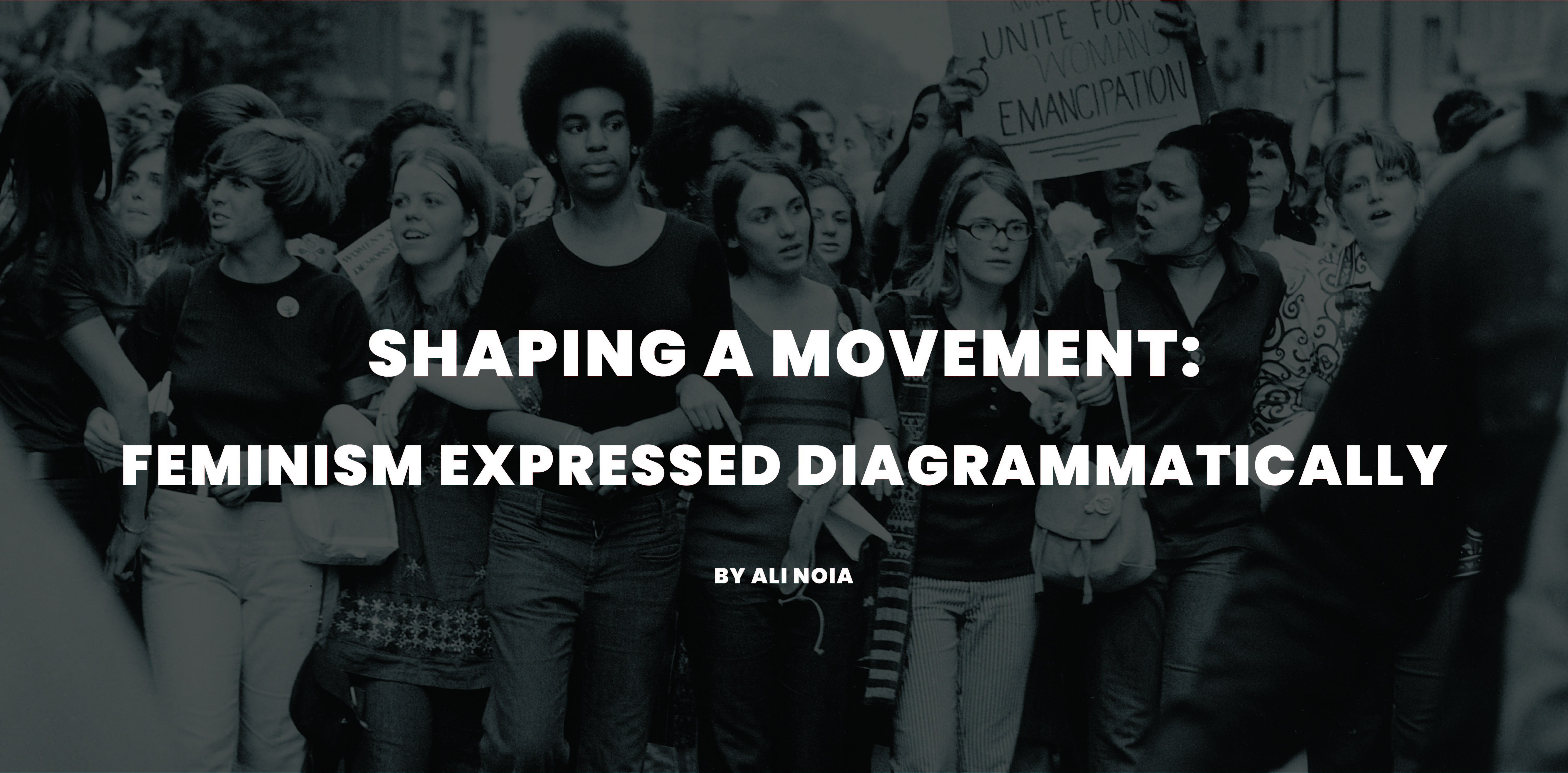
Exhibit curated by Ali Noia
Identity Performance by Neil Coomber
This diagram shows the several ways through which identity, and more specifically gender identity, can be performed. Much of it is conceptually based off of feminist Judith Butler's ideas surrounding gender performance. The designer of the diagram, Neil Coomber, applies Butler's theories to Chinese Bronze Age burials in order to understand how gender was expressed or performed in death rituals.
The Dialectic of Sex: The Case for Feminist Revolution by Shulamith Firestone
In this diagram, feminist scholar Shulamith Firestone shows where division in society occurs in three different contexts: sex, class and culture.
In the first section of her diagram, Shulamith shows the hierarchies that appear in each different system, and how those hierarchies have shaped society through modern history.
The second and third sections are labeled “Revolution” and “Transition.” The “Revolution” section explains the type of revolution that would need to take place in order for the collective to achieve equality in the context of what dialectic they are apart of. For there to be sexual equality, a sexual revolution. For there to be class equality, an economic revolution. The “Transition” section then explains the progression of revolution. In a sexual revolution, Shulamith calls for the development of artificial reproduction and the eradication of single standard monogamy.
The final section, labeled, “Ultimate Goal,” imagines what an equitable society would look like in the context of each dialectic (sex, class and culture).
CRIAW/ICREF's Wheel of Feminist Intersectionality
CRIAW's Wheel of Feminist Intersectionality uses an onion diagram to show the different ways that women can experience oppression. The innermost section of the diagram details individual circumstances such as upbringing. With each layer, the conditions that lead to oppression become more institutional or occur on a larger scale. Some of these included in the outermost layer, for instance, include social forces, legal systems, and colonization. The onion structure of CRIAW's diagram illustrates that multiple oppressive forces can be active at one time in the life of a woman.
Model of Feminist Theory by Joy Egbert and Mary Roe
"Figure 1 presents a model of feminist theory that begins with the belief that systems exist that oppress and work against individuals. The model then shows that oppression is based on intersecting identities that can create discrimination and exclusion. The model indicates the idea that, through knowledge and action, oppressive systems can be disrupted to support change and understanding" (Egbert and Roe 2020, p. 1).
The topographic hierarchy of Egbert and Roe's diagram, in which boxes are oriented higher and higher with each step, suggests progress being achieved as unjust systems are dismantled with the strategies highlighted in the diagram. This design choice particularly caught my attention, because the idea of hierarchy appears in feminist theory in two very different ways. On one hand, it can be used to highlight patriarchy. On another hand, it can be used to think about progress or the passing of time as Egbert and Roe do here.
Feminist Tactical Strategy: A Diagrammatical Series by Ti-Grace Atkinson
'Strategy and Tactics' is a set of four diagrams created by Ti-Grace Atkinson, an activist and writer who pioneered radical feminist thought during the 1970s.
'Strategy and Tactics' is considered to be the first diagrammatical representation of patriarchal power dynamics. It separates those involved in the feminist movement into two primary categories: the oppressed and the oppressors. Atkinson further divides these two categories by characterizing whether or not members from each group favor a feminist revolution. The diagram visually imagines how equality can be achieved overtime by the oppressed.
Atkinson takes her readers through 4 different phases of revolution, which she represents through 4 different diagrams. The phases progress as follows: pre-revolutionary, pre-strategical offensive against oppressor, overview following first stage of first strategic offensive against oppressor, and finally initiation of second offensive by oppressed.
Atkinson does not include a visual representation of the future, suggesting that in her diagramming she seeks a path forward in the feminist movement but is not certain about what post-revolutionary world might look like.
Gender as Structure by Barbara Risman
This web, constructed by sociologist and gender studies scholar Barbara Risman, displays what she identifies as the three structures of gender: individual, interactional, and institutional.
In her work, Risman states that, "The gender structure differentiates opportunities and constraints based on sex category and thus has consequences on three dimensions: (1) at the individual level, for the development of gendered selves, (2) during interaction as women and men face different cultural expectations even when they fill the identical structural positions; and (3) in institutional domains where both cultural and logics and explicit regulations regarding resource distribution and material goods are gender specific" (Risman and Davis 2013, p. 744).
Double-sided arrows connect all of the structural frames to one another, demonstrating the notion that the relationships between each of them deeply shape both human behavior and existing theories surrounding gender.
Risman uses text in her diagram to expand on her ideas of the three terms individual, interactional and institutional. In doing so, she provides readers with the clarity necessary to understand how gender permeates multiple levels of societal functioning. Risman's diagram is a simple and digestible introduction to principles of gender theory.

